Recent advances in energy harvesting (EH) technologies permits wireless sensor network (WSNs) to extend their lifetime by getting the energy that is available in the environment. A sensor operates on a photovoltaic cell that charges based on the artificial light and daylight. Control algorithm is applied to the home automation system for getting results. Power manager manages the energy harvester and node supply. This paper measures the energy that is harvested from the daylight or artificial light and checks for its consumption, energy harvested, and available energy and evaluates them with respect to time and seasons (summers and winters). This harvested energy is put to use by controlling the home automation using wireless sensor networks.
Keywords |
| Energy harvested, Energy consumption, Energy harvesting, Wireless sensors, MPPT algorithm, Power
manager, Control algorithm. |
I. INTRODUCTION |
| Wireless Sensor Networks (WSNs) are composed of distributed autonomous sensors which are randomly deployed in
remote places to collect or monitor physical or environmental conditions, such as sound temperature etc and transmit it
to a base station. Applications field include environmental monitoring traffic control, home automation, structural
health monitoring, etc. Most WSNs rely on batteries which arc a limited source of energy which is to be eventually
replaced or recharged. Due to large network size, replacing batteries is usually very expensive and also impractical or
difficult in hostile environments. Energy harvesting power sources are the promising alternatives. Also called power
harvesting or scavenging, it is the process in which energy derived from external sources for instance solar power,
kinetic energy, etc. Recent advances in this field have allowed battery power nodes to scavenge energy from
environment and to power the battery nodes. People have been exploring for ways to store the heat from many
decennium. Waterwheel and the windmill are the main source of motivation for the energy to be harvested. The major
reason to store the energy is to power the sensor networks to save the energy and make use of it when it is required. |
| Energy harvesting converts ambient energy into electrical energy, which is of great interest for the
military and commercial sectors. Devices such as photovoltaic, Pyroelectric, electrostatic, thermoelectric, etc can be
used as sensors. Energy can be harvested by human power like biomedical, pedal power and many more. Energy
harvested from natural sources like solar energy, wind energy, thermal energy, etc is inexhaustible [1][2]. Energy can
be stored in various devices such as a capacitor, super capacitor or battery. Energy harvesting plays a vital role in home
automation system .It reduces dependency on battery power .There are different levels of harvested energy that vary
significantly from application to application [3]. This paper is organised as follows. Section II is the related work to the
wireless sensor networks. In Section III is a brief introduction of the home automation system with the control
algorithm. Section IV explains the storage of energy in photovoltaic cell. The MPPT algorithm is used to get better
results that are described in section V. Section VI shows the management of the power that is used in the process. Then
the results are shown in Section VII. Finally, Section VIII is the conclusion. |
II. RELATED WORK |
| Wireless Sensor Network is used in number of applications such as: Home Automation, Environment, Medical etc.
These will be discussed here one by one [4]. Energy harvesting is also an integral part of wireless sensor network these
days. Energy is harvested from faint light which is available indoors. Circuits that are used are maximum power point
tracking (MPPT) circuit, energy storage circuit, energy instantaneous discharging circuit and DC-DC boost
converter[4]. Battery less sensors in building automation are used in wireless energy harvesting [5]. Automation of a
building is also done by making use of battery less sensors and using wireless energy harvesting RFID applications
making use of electromagnetic field for supplying power [5]. The ubiquitous radiation which can be taken from the
radio transmitters and mobile phone base stations can be used to harvest the energy. Light harvesting sensors are also
used for controlling indoor lightning. Drawing energy from the surrounding to agitate the sensors adds tractability to
the system design. Here the energy is harvested from both daylight and artificial light[6]. Recognition of the wireless
sensor nodes which harvests energy from thermoelectric harvester module is also helpful in aircraft applications [7].
The zigbee-based energy harvesting in wireless sensor networks is also analyzed and energy consumption is also
checked [18]. |
| There has been a great progress in the field of medical sciences. From the conventional ways of detecting a
problem in a human body now a day’s stand-alone systems are used instead of manual way of detecting problem in
human body [9]. Wearable devices can be used that monitor the human body for any critical injury. An energy-efficient
ASIC (Application-Specific integrated Circuit) in medical health care applications are also proposed [10]. Enocean is a
wireless technology that has flexibility of wireless devices along with energy harvesting techniques that solves the most
common in wireless devices of battery. It is all about how to save energy in wireless sensor networks. Enocean
provides a low-power design [11]. |
III. HOME AUTOMATION |
| Home automation is the automatic controlling of the complete house. Electrical appliances such as air conditioner
(AC), fans, lights etc are all centrally controlled. It provides improved convenience, security and comfort. Through
smart phones and tablet connectivity the home automation has become very popular in the recent years due to their
much affordability and simplicity. |
| Home automation system consists of interlinked components that are a type of centralized distributed system. Few of
the characteristics that it should have are as follows:- |
| 1. Future : The technique installed should be stable, proven and with a reliable technology. It is difficult to
upgrade or uninstall a system. |
| 2.Cost : With lesser cost there should be maximum benefits. Large quantity of sensing and actuating are used during
the process of communication. That either leads to increase in cost or inefficiency of the system. |
| 3.Security: Unauthorized access , privacy invasion , etc threats are very common . The system should be properly
protected. |
| 4. User interaction: An inexperienced user should also be comfortable in understanding it well. Interface must have
familiar controls and should be easy to understand. |
| 5. Installation overhead: The system should not fully rely on the wired communication. Not many changes should be
made in the existing system to avoid any overhead. |
| In this paper, the controlling of AC, fans and lights are considered. Sensors are deployed for sensing any
changes made. Few assumptions are made in the process. Nobody is at home from 9am to 5pm. That implies that no
appliances are being used. There will be no consumption between this time. The consumption will begin after 5pm. |
| During summers the maximum usage of AC will be at 12 noon because the illuminance increases with time and a little
variation is seen till 3pm and hence later it starts to degrade. At night time it has a totally different effect, it is
comparatively better. Control algorithm is implemented so that there is proper working of the technique. Control
algorithm controls the working of the appliances. Those at what time appliances are to be turned ON/OFF. |
IV. ENERGY STORAGE |
| Photovoltaic (PV) cell will generate the electrical power that coverts the solar radiation into electricity that has the
photovoltaic effect. The power that will be generated employs solar panels that are composed of solar cells. Solar
photovoltaic is sustainable energy source. Sensors operate on a photovoltaic cell that charges based on ambient daylight
and artificial light. There are wide ranges of harvesters such as photovoltaic cells (PVs), thermal generators (TEGs) or
vibration scavengers. The solar PVs provide the highest power density [6]. PVs are easy to implement when compared
to other techniques .Moreover they are small in size and cheap. As a consequence PVs are widely used in energy
harvesting WSNs [12]. Figure 1 shows the working of a PV system with battery storage. |
V. MPPT ALGORITHM |
| MPPT is algorithm that are in charge controllers that is used or extracting the maximum available power from the
photovoltaic module. It plays a vital role as because it allows the module to produce the maximum power it is capable
of. The more the power the better the outcome will be. The maximum power point tracking (MPPT) control of the
photovoltaic system is critical for the success of the PV system. The MPPT technique grids the solar battery chargers to
get the maximum possible power from one or more PV devices. There are three rendering of the hill climbing
algorithm, P&O (perturb and observe), MP&O (modified perturb and observe) and EPP (Estimate perturb and perturb)
[12].Due to its simplicity the P&O method is the most popular MPPT algorithm. After the first perturb operation the
current power is calculated and hence compared with the previous value. Due to few limitations in P&O the MP&O
technique was introduced. |
| Fig 2 isolates the fluctuations that are caused by the perturbation process that are due to the irradiance or
weather change. Change in irradiance is estimated in every perturb process that calculates the amount of power change
that is due to the change in atmospheric condition. The tracking speed of MP&O method is then half of the P&O
method. Because the PV voltage is not kept constant and the estimate process stops tracking maximum power point.
MP&O algorithm is used to get the Vref will thereby be further used by the power management technique to get the
outcome. |
VI. POWER MANAGEMENT |
| The Power management is an important concern in sensor networks, because the concern is to use the available energy
efficiently. As there is no tethered energy infrastructure available. We need to manage power so that it is not wasted
and should be wisely used as it is the harvested energy. Figure 3 is a flowchart of the power manager. |
| A power manager is adopted that controls the energy from the PV panel, its
powering, etc. An ideal controller that manages low power supply and the energy that will be harvested. While
controlling that the battery is not over charged nor discharged (10 %< SOC<=95%). The power manager sporadically
points to WSnet the source of energy used, whether it is solar harvester or battery [13]. Figure shows the flowchart of a
power manager. The value of threshold are VThr1 = 3.6V and VThr2 = 4V that are calculated according to operating
voltage of the battery and the sensor node. At the start the power manager measures the voltage that is delivered by
solar harvester. Firstly, the thresholds are compared then power manager decides which power source to choose from,
solar harvester or battery that should power the node. If the PV panel voltage is less than VThr2 but more than VThr1, the
node is directly connected to PV panel . And the voltage is higher than VThr2, then it is connected to the solar harvester
to the node and charges the battery only and if the battery SOC<95%. And if the voltage is low VThr1 the node is
powered using a battery. |
| Illumination is the intensity of light. Lightning can be natural (Sunlight, etc) or manmade (Lamps, etc). “Figure-4”
shows that the graph is linear between illumination and time. At the starting of the day the illumination is less because
the sun is completely not out and then as the time increases so does the intensity. Illuminance is calculated [14] by: |
| Illumination=Flux in summer / Total area; |
| Illumination is directly proportional to flux and inversely proportional to the area(that is considered).The area is kept
constant which depends on the number of rooms considered .Illumination will increase with the increase in time .When
the evening time comes hence the illumination will start to decrease because the intensity will decrease. |
| Irradiance is the power of electromagnetic radiation per unit radiative flux that is incident on a surface
.According to the relationship between them there is not much variation in power with the irradiance data from the
photovoltaic cell. By using the following we get the relation between the irradiance and power [15]. |
| Irradiance (i) = (Power (i)*3.14)/2 |
| The value is in the negative as there comes a point when they are no power in the system to be used. And hence the
irradiance also goes down. |
| Power consumption plays an essential part in the complete scenario. The power is generated and then it is to be
consumed. To reduce the power consumption we need to activate the sensors only when the measuring process is ON.
This way the energy will not be wasted .Measurement interval is set to Tinterval=15 minutes |
 |
| Average power consumption of a sensor increases with increase in density or power average power consumption [9] is
calculate by : |
 |
| The fall in the value of density results in the decrease of the curve. Huge variations are to be seen in the consumption of
energy. |
| Available solar energy varies with time of the day. MPPT technique is important to get the highest possible power. The
I-V characteristic of the photovoltaic panel is nonlinear and with the change in irradiance it changes. Power is the
outcome of current with voltage. By making use of irradiance and temperature, solar harvester calculated current and
voltage. Change in temperature is seen because of the change in irradiance. The power is minimum in the starting
because the current and voltage are less. And hence as they increase so does the power. |
| Temperature plays a important role in home automation system. Temperature varies with the change in season .The
temperature will be more during the summer season as compared to the winter season. “Figure -8” shows the change in
temperature of a room with time [17]. The temperature of the room will be normal during both the seasons respectively.
When the temperature reaches a particular limit the AC/Heater is turned ON and is turned OFF when temperature
reaches the desired level. Figure depicts the temperature of a room when the appliances are turned ON and OFF .There
are a lot of fluctuations because of the fact that when the appliances are turned ON/OFF the room temperature remains
constant for a while and then starts to decrease/increase. |
| Figure 9 shows the number of times the air conditioner is turned on in a room when it is summers. When it
reaches a certain temperature then hence the air conditioner is turned off. The number of times it is turned on shows the
amount of energy being consumed [18]. The energy is harvested then we get the amount of energy that is consumed.
By using : |
| Energy harvested = 261*time |
| Energy Consumed = (3*active lights *number of rooms)*40*time |
| The energy consumed will be determined by getting the harvested energy and the energy being consumed. Figure 10
shows the change in temperature with respect to time in summer. During summer season the maximum temperature
inside a closed room is 35oC when Ac is turned OFF. When the AC is turned on the temperature inside the room tends
to decrease and when it is totally fine inside the room say the temperature reaches 18oC the AC is turned OFF then .the
variation are seen because the temperature is not fixed at any time .It keeps on fluctuating. Figure 11 shows change in
temperature with respect to time in winter season. The minimum temperature is recorded as 5OC and after switching
ON the heater it reaches 20oC and hence the heater is turned OFF .Stability is seen when the temperature reaches 20oC
this is so because the heater is turned OFF the temperature does not decrease immediately, it is stable for some time and
start to decrease. |
| Figure 12 show the voltage is the power that has been harvested. Due to the change in weather there can be fluctuations
in voltages. In rough weather like in rainy or foggy the voltage is very less .Voltage does increase with increase in time.
As the energy harvested increases with passing time. |
VIII. CONCLUSION |
| This paper presents the automatic controlling of temperature in a room and the usage of appliances (AC, Heater) by
harvesting energy from the surrounding or artificial lightning. Control algorithm is used to control the home
automation. To extract the maximum power from the photovoltaic panel, MPPT algorithm has been used . That will get
the maximum powers which will give better results. Power management technique is used so that no power is wasted
and the maximum use of the power harvested can be made. The winters and summers have different illuminance and
irradiance. There is maximum consumption of energy in the afternoon time than the morning or the evening as the
intensity will be at peak. There will be no usage of energy from 9am-5pm as there is nobody at home. At the night time
the energy is harvested from the artificial sources. In future piezoelectric electric patches can be used to harvest energy. |
Figures at a glance |
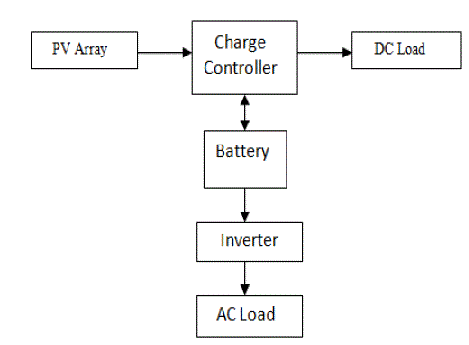 |
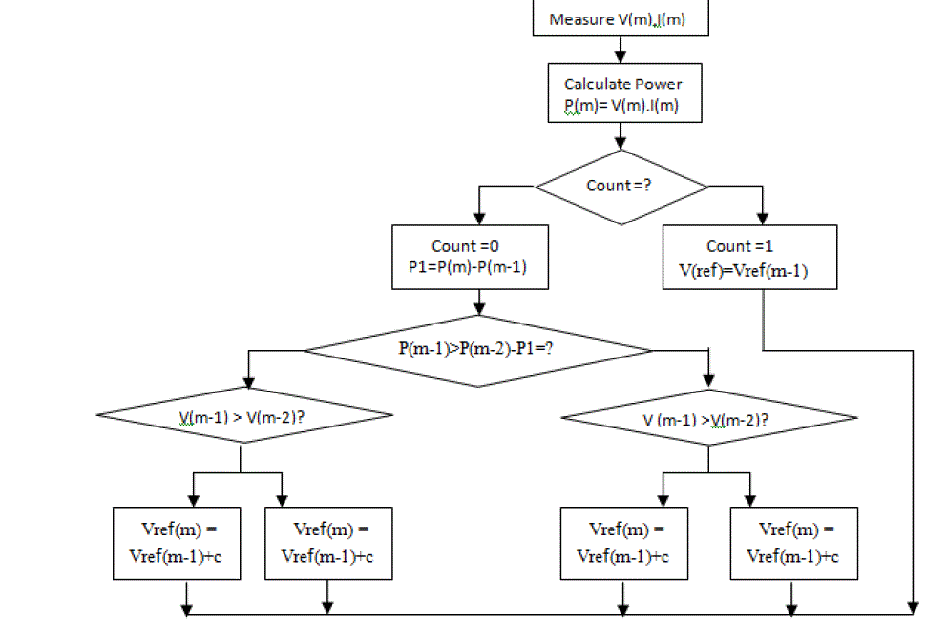 |
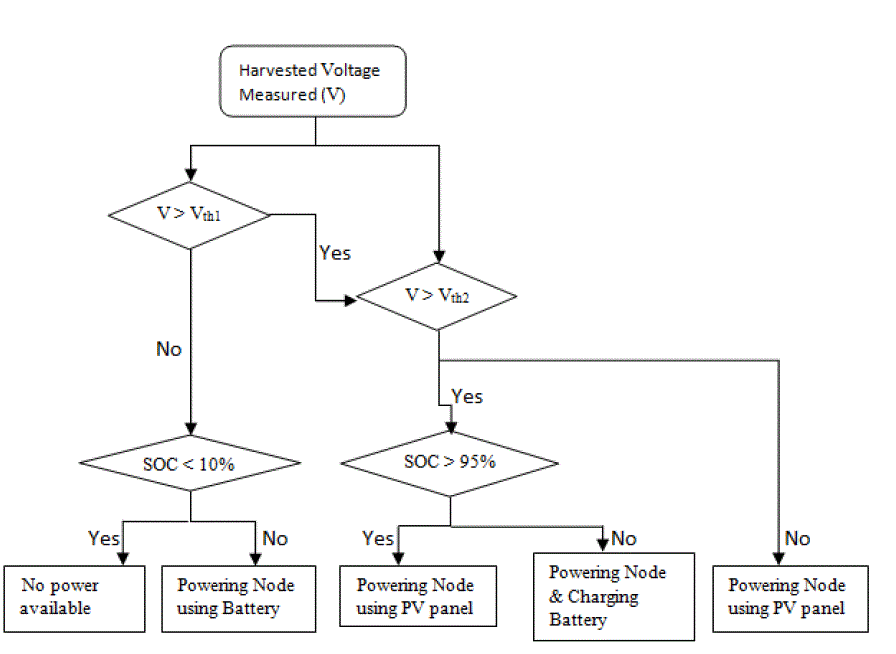 |
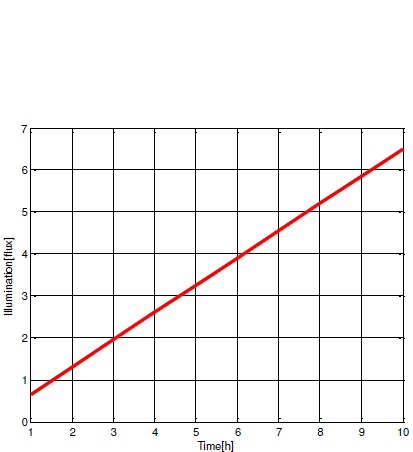 |
| Figure 1 |
Figure 2 |
Figure 3 |
Figure 4 |
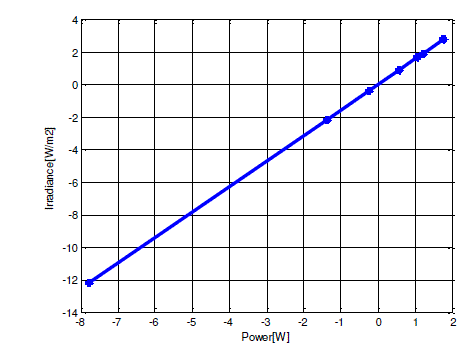 |
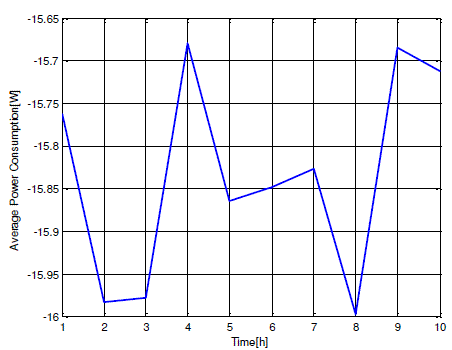 |
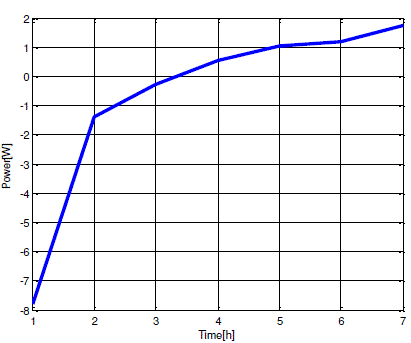 |
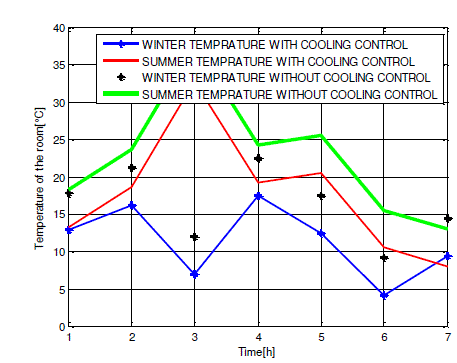 |
| Figure 5 |
Figure 6 |
Figure 7 |
Figure 8 |
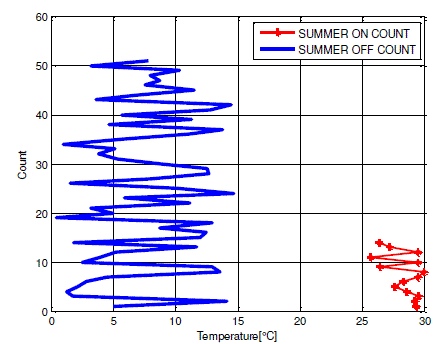 |
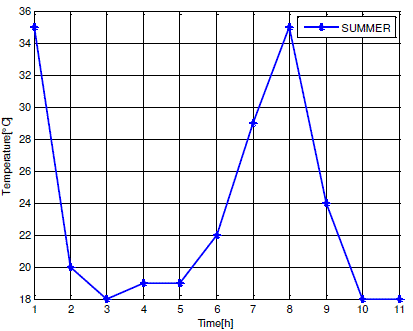 |
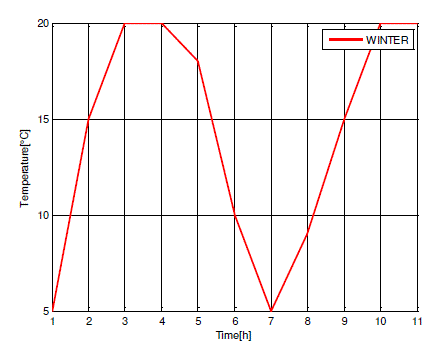 |
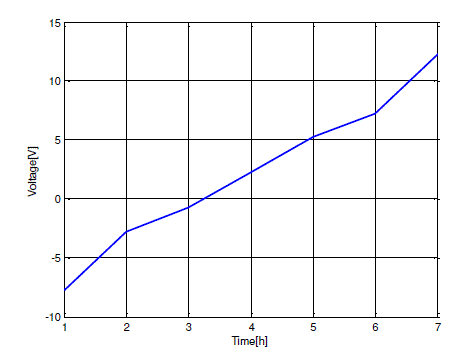 |
| Figure 9 |
Figure 10 |
Figure 11 |
Figure 12 |
|
| |
References |
- Chong Yu , Xiong Chen , ‘Home monitoring system based on indoor service robot and wireless sensor network’, Computers and Electrical nEngineering , Vol.39, Issue 4, pp. 1276–1287, 2013 .
- Md. ZahurulHuq , Pro. Syed Islam, ‘Home area network technology assessment or demand response in smart grid environment’, IEEE, pp. 1- 6, 2010.
- Juan V.Capella , Alberto Bonastre , et al , “ In line river monitoring of nitrate concentration by means of a Wireless Sensor Network withenergy harvesting “ , Sensors and Actuators B : Chemical , Vol.177, pp. 419-427 , Vol. 177 ,2013 .
- Hua Yu , QuiqinYue , “ Indoor Light Energy Harvesting System for Energy-aware Wireless Sensor Node “,International Conference on Future Energy , Environment, and Materials , pp. 1027-1032 , 2012.
- GerdvomBoegel,Frederic Meyer, et al , “Batteryless Sensors in Building Automation by use of wireless Energy Harvesting”, IEEE 1stinternational symposium on wireless systems (IDAACS-SWS), , pp.72-77,2012.
- AshishPandharipande ,Shuai Li , “ Light – harvesting wireless sensors for indoor lighting control “, Sensors Journal, Volume:13 , Issue:12, pp..4599-4606,2013.
- D.Samson ,M.Kluge , et al , “ Wireless sensor node powered by aircraft specific thermoelectric energy harvesting “, Sensors and Actuators A : Physical , Vol. 172 , pp.240-244, 2011 .
- Jiaying Song, Yen Kheng Tan, “Energy Consumption Analysis of Zigbee-Based Energy Harvesting Wireless Sensor Networks”,Communication Systems International Conference, pp. 468-472, 2012.
- D.C. Hoang, Y.K Tan, et al, “Thermal Energy Harvesting From Human Warmth For Wireless Body Area Network In Medical Healthcare System”, International conference on power electronics and drive systems,. pp. 1277-1282, 2009.
- Xiaoyu Zhang, Hanjun Jiang, et al, “An Energy-Efficient ASIC for Wireless Body Sensor Networks in Medical Application”, IEEETransactions On Biomedical Circuits And Systems, Vol.4 No.1, pp. 11-18, 2010.
- JoernPloennings, UweRyssel, et al, “Performance analysis of the enocean wireless sensor network protocol”, IEEE conference on emerging technologies and factory automation, pp. 1-9, 2010.
- A. Yafaoui, B. Wu , et al , ‘Implementation of maximum point tracking algorithm for residential photovoltaic systems ’,2nd Canadian solar buildings conference, June 10-14, pp. 1-6, 2007.
- Amine Didioui, Carolynn Bernier, et al, “HarWSNet : A co-Simulation framework for energy harvesting wireless sensor networks”, International conference on computing , networking and communications , wireless ad hoc and sensor networks symposium, pp. 808-812, 2013.
- Lux data website - en.wikipedia.org/wiki/Lux.
- Irradiance data website - en.wikipedia.org/wiki/Irradiance
- Leander B.Hormann , Philipp M.Glatz , et al , ‘A wireless sensor node for river monitoring using MSP430 and energy harvesting’, Education and Research Conference (EDERC) ,2010 4th European , pp.140-144, 2013.
- C. Vichweger, M. Baldauf , et al , ‘ Energy profile analysis by simulation for the design of energy harvesting systems’ , 9th International multiconference on systems, signals and devices, pp. 1-3, 2012.
- Dan Stefan Tudose , Andrei Voinescu , et al , “Home Automation Design Using 6LoWPAN Wireless Sensor Networks", Distributed Computing in Sensor Systems and Workshops(DCOSS),2011 International Conference on ,pp. 1-6,2011.
|